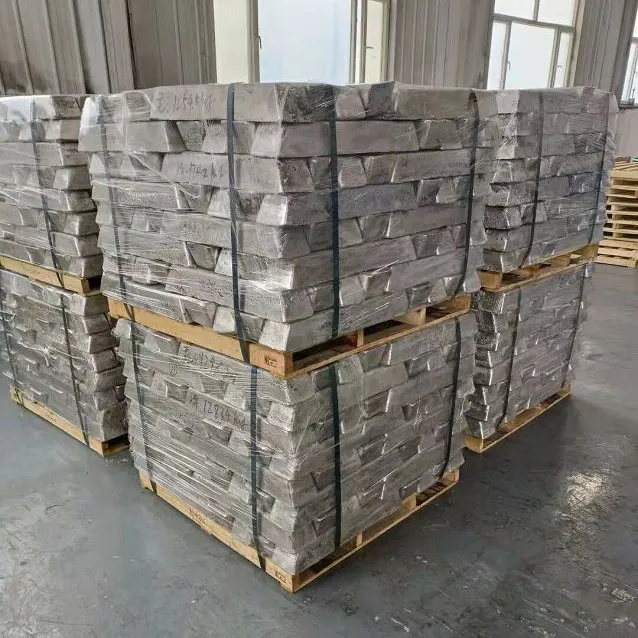Calcium Magnesium Alloys: A Q&A Guide to Properties, Applications, and Benefits
2024-10-23
Calcium-magnesium alloys are gaining attention in various industries due to their unique properties and advantages. These alloys combine the lightweight characteristics of magnesium with the reactivity of calcium, making them valuable for specific applications. In this guide, we answer common questions about calcium-magnesium alloys, helping you better understand their uses and importance.
What Are Calcium Magnesium Alloys?
Calcium-magnesium alloys are metallic materials made by combining calcium and magnesium in varying ratios. The inclusion of calcium improves certain properties of magnesium, such as oxidation resistance, hardness, and structural stability. These alloys are typically lightweight and reactive, often used in specialized fields that demand both low weight and functional versatility.
What Are the Key Properties of Calcium Magnesium Alloys?
Calcium-magnesium alloys exhibit several useful characteristics, such as:
Low density: Ideal for applications that benefit from lightweight materials.
Good corrosion resistance: Calcium enhances the alloy’s ability to resist oxidation.
High thermal conductivity: Facilitates heat transfer, beneficial in industrial settings.
Improved creep resistance: Maintains mechanical strength under prolonged stress and heat.
However, they are also relatively soft and reactive, requiring specific storage and handling conditions.
What Are the Main Applications of Calcium Magnesium Alloys?
These alloys are used across multiple industries due to their lightweight and corrosion-resistant properties. Common applications include:
Aerospace industry: Used in aircraft components where low weight and high strength are essential.
Automotive industry: Helps reduce vehicle weight, improving fuel efficiency and performance.
Biomedical field: Utilized in implants and biodegradable devices, as calcium is biocompatible.
Energy sector: Applied in batteries and fuel cells for their electrical conductivity.
Metallurgy: Acts as a reducing agent in the production of other metals, such as titanium and uranium.
The alloy’s versatility makes it a preferred material in applications that require both performance and reduced environmental impact.
How Do Calcium and Magnesium Improve Each Other in Alloys?
The combination of calcium and magnesium balances the strengths of both elements. Calcium reduces the oxidation rate of magnesium, improving its corrosion resistance. At the same time, magnesium adds lightness and structural integrity. This synergy creates alloys that are more stable and durable than pure magnesium, especially in high-temperature environments.
What Are the Challenges of Working with Calcium Magnesium Alloys?
Despite their benefits, there are some challenges associated with calcium-magnesium alloys:
Reactivity: Both calcium and magnesium are highly reactive, requiring careful handling.
Oxidation risk: Although more resistant than pure magnesium, the alloy still needs protective coatings or controlled environments.
Limited mechanical strength: These alloys are not as strong as some other metals, making them less suitable for load-bearing applications.
Cost: Production costs can be higher than other lightweight alloys due to the reactive nature of the materials.
Proper storage and treatment methods are essential to maintain the alloy’s properties and avoid degradation.
How Are Calcium Magnesium Alloys Produced?
Calcium-magnesium alloys are typically produced through a process known as melting and casting. The two elements are heated and combined under controlled conditions to avoid oxidation. In some cases, vacuum or inert gas environments are used to prevent unwanted reactions with air. After melting, the alloy is cast into ingots, bars, or other forms suitable for further processing.
Are Calcium Magnesium Alloys Environmentally Friendly?
Yes, these alloys are considered environmentally friendly in certain contexts. Magnesium is recyclable, and its lightweight properties help reduce fuel consumption in vehicles, contributing to lower carbon emissions. In the biomedical field, calcium-magnesium alloys are used for biodegradable implants, reducing the need for surgical removal and minimizing waste.
However, the production process does require energy and specialized handling, which can have an environmental impact. Using recycled materials and improving production efficiency can help mitigate these issues.
How Are Calcium Magnesium Alloys Stored and Maintained?
Due to their reactive nature, calcium-magnesium alloys require specific storage and maintenance conditions. Key considerations include:
Dry storage: Moisture can cause oxidation, so alloys should be stored in a dry environment.
Inert atmosphere: For long-term storage, using nitrogen or argon gas can prevent oxidation.
Protective coatings: Applying coatings helps enhance corrosion resistance during use.
Safe handling: Gloves and protective equipment are recommended, as the alloys can react with certain chemicals or moisture.
Proper maintenance extends the lifespan of the alloy and ensures its performance over time.
How Do Calcium Magnesium Alloys Compare to Other Lightweight Metals?
Compared to aluminum and titanium, calcium-magnesium alloys are lighter but less mechanically strong. While aluminum alloys offer higher strength, calcium-magnesium alloys excel in applications where weight reduction and corrosion resistance are more critical. They also outperform some other metals in terms of thermal conductivity, making them suitable for heat-sensitive applications.
What Are the Future Prospects of Calcium Magnesium Alloys?
With the growing demand for sustainable materials and lightweight solutions, calcium-magnesium alloys are expected to play an increasingly important role in various industries. Research is focusing on enhancing the strength and durability of these alloys, making them viable for more demanding applications. Additionally, advances in manufacturing processes may help lower production costs and expand their use in automotive, aerospace, and energy sectors.
Conclusion
Calcium-magnesium alloys offer a unique combination of lightweight properties, corrosion resistance, and thermal conductivity. They are valuable in industries ranging from aerospace to biomedical applications, helping to improve efficiency and reduce environmental impact. Although there are some challenges related to their reactivity and mechanical strength, advances in technology continue to enhance their performance and versatility.
As industries shift toward more sustainable and efficient materials, calcium-magnesium alloys will likely see broader adoption, especially in applications where reducing weight and increasing energy efficiency are paramount.



